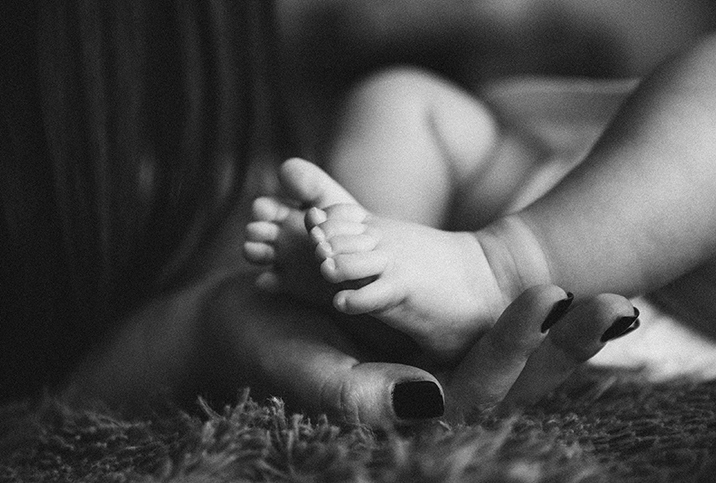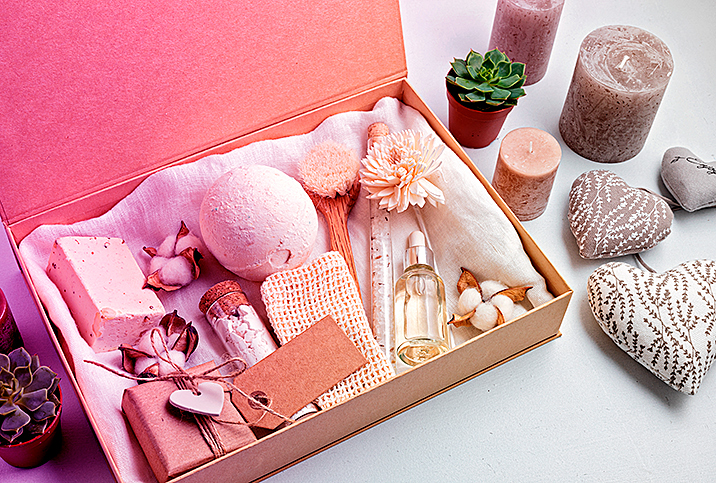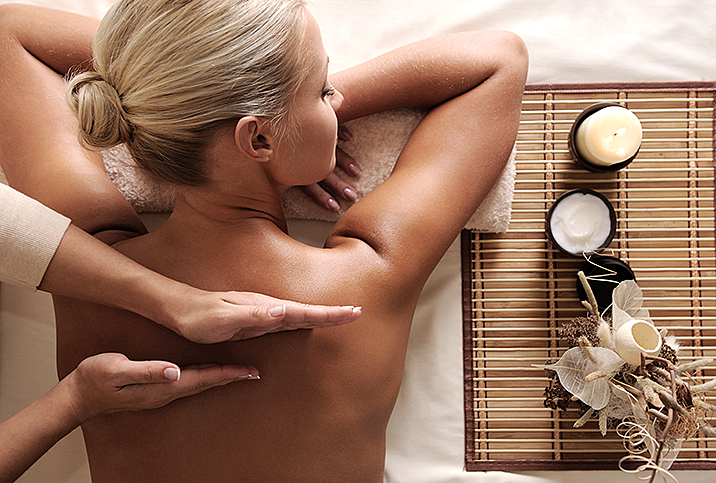Skin Care After Childbirth: Postpartum Issues to Consider

As special as pregnancy and childbirth are, make no mistake: You'll feel like your body has been through the wringer. Between raging hormones, a growing belly and the stress associated with adding a new life to the world, it's no wonder this series of events represents one of the toughest times in a woman's life.
And all the changes that take place during pregnancy don't disappear when the baby arrives.
While it's important to prioritize the needs of your new arrival, and it's easy to get distracted by major life disruptions that leave a new mom sleep-deprived and struggling to find time to eat, you shouldn't ignore the postpartum needs of your body's largest organ. Raging hormones, stress and a baby belly are all normal parts of pregnancy, and they all directly impact your skin, making postpartum skin care an important part of the recovery process.
Don't be surprised by new skin care challenges
As your pregnancy was drawing to a close, you probably started paying more attention to the way your skin was affected. Maybe your belly started to itch as your skin stretched. Maybe you noticed stretch marks start to emerge around your waist, breasts, butt or thighs. Maybe the linea nigra running down the center of your abdomen was all you could focus on when you looked in the mirror.
Of course, every pregnancy app tells you to expect these changes, so even if you didn't love all of them, they were still signs your baby was on its way. However, you may not have considered that these skin changes weren't going to disappear at once.
"Anticipate that your body will be going through changes after delivery, but they are normal and you may not feel like yourself right away. It's okay to give yourself time to recover," said Marisa K. Garshick, M.D., a dermatologist and assistant clinical professor of dermatology at New York-Presbyterian/Weill Cornell Medical Center.
You don't have to love every part of your postpartum body, but when it comes to postpartum skin care, understand it's all part of the journey of becoming a mom. First and foremost, you need to care for your skin in a way that's good for you and your little one. With time, you can take extra steps (as desired) to think through any cosmetic changes you'd like to address when it's appropriate.
Most common postpartum skin care issues (and how to help)
There are many ways your skin can be affected by pregnancy and postpartum changes, and, as in most of life, the changes you experience may be different from what your sister, your mother or your best friend experience. But generally speaking, if you're trying to plan for what you might need after giving birth, high-quality moisturizer should be top on your list, along with a few other common skin care products.
"Generally, ingredients that moisturize and hydrate the skin are the most important," Garshick said. "Witch hazel can be helpful to soothe any discomfort in the groin area postpartum. Sunscreen is always important as hormonal changes can sometimes increase sun sensitivity that can contribute to hyperpigmentation."
For the most part, you may have to wait and see what issues you'll have, and then respond.
Breakouts
Whether or not you experienced breakouts during your pregnancy, they may be an issue after birth.
"During pregnancy, acne is most often due to higher levels of progesterone, which increases sebum production," said Deanne Mraz Robinson, M.D., a dermatologist practicing at Modern Dermatology in Westport, Connecticut. "Postpartum, these levels take a while to stabilize as hormone levels balance back out. Additionally, most new moms are sleep-deprived and stressed, which raises cortisol levels and, subsequently, sebum and inflammation levels."
In other words, your skin is ultimately taking on and displaying the results of all the new changes in your life—just in the form of pimples. That said, you may have to avoid some of the products you may have relied on pre-pregnancy.
"If you're nursing, you should still avoid some of the usual go-tos for acne. Namely, salicylic acid, benzoyl peroxide and retinoids," Robinson said, adding that if blackheads and zits are getting you down, talk to your doctor about products that are safe to use. She also suggested this may be a good opportunity to treat yourself to some self-care and schedule a facial at a medical dermatology clinic.
Dry skin
It's always perplexing when you experience both breakouts and dry skin, but these are fairly common in postpartum moms.
"Sleep deprivation and breastfeeding can lead to dehydration, which shows up on the skin," Robinson explained. "Aim to drink at least half your body weight in ounces of water each day. You can also add a cool-mist humidifier to the rooms you spend the most time in, thus adding humidity to the air."
Scar and incision-site healing
Regardless of your birth plan, no one knows exactly what's going to happen during delivery. As a result, you may find yourself dealing with the pain and challenge of a C-section or episiotomy incision site, stitches and scars post-pregnancy. The good news is incision sites are reasonably easy to care for, and most long-term scarring is minimal.
"Thankfully, today's C-section incisions are done low and are usually easily hidden beneath a bikini," Robinson said. "I like silicone patches, which aid in scar healing while protecting the skin from your clothing."
It's also important to keep these areas well-moisturized as they heal.
"Thick moisturizing ointments, such as Vaseline, help early C-section scars, as not only do these hydrate the skin, but also form a protective barrier to help protect the skin from external irritants," Garshick advised.
Stretch marks
Even if you thought you'd made it through pregnancy without stretch marks, you may get a surprise after the baby arrives. Stretch marks that aren't obvious as the skin is stretched may become quite obvious when the skin is looser. While stretch marks tend to fade with time, you can take steps to help the process along, but you may not want to rush to zap them away with expensive treatments until you see how your skin heals on its own.
"There are a lot of options for stretch marks," Garshick said. "The key ingredients with evidence to support their use include Centella asiatica, hyaluronic acid and retinoids. But retinoids should be avoided while pregnant or breastfeeding, so speak to your doctor first. Moisturizing the skin is still a good idea, even for stretch marks."
If time and skin care products fail to provide the results you want, doctors can perform specific procedures to help eliminate stretch marks. Garshick suggests lasers and micro needling as possible options.
Melasma
If you're one of the many women who experience melasma, or the "mask of pregnancy" that appears as darker skin around the mouth, nose and cheeks, Robinson emphasizes you're not alone.
"It's very common and unfortunately can be quite tricky to treat," she said. And, like the rest of the items on this list, it doesn't automatically disappear after you deliver your little bundle of joy.
To top it off, breastfeeding moms aren't able to use some of the more successful treatments until they're done nursing. So until you're ready to wean your little one, "patience and sun avoidance are key," Robinson said.
Stock up on floppy hats and sunscreen, and plan to spend a little extra time inside (at least during the sunniest hours of the day).
Loose skin
As your baby grew, your skin stretched. After doing so for months, your skin can't just snap back to normal. To top it off, skin laxity can be affected by factors like age, so even if your skin seemed to return quickly to normal after your first baby, you may have a different experience after your second or third.
"Just like an elastic, it doesn't always bounce right back," Robinson explained. "Be patient and when you've returned to a feel-good weight, discuss [with your doctor] skin-tightening laser treatments or body sculpting therapies."
Cracked nipples
Last, but certainly not least, breastfeeding moms may be plagued by cracked, sore, dry or bleeding nipples, factors that may be exacerbated once your little one gets their first teeth.
"Breastfeeding can be really hard in the beginning, and most moms will have some degree of dry, cracked nipples," Robinson said. "Apply lanolin after breastfeeding and try to keep the breasts dry between feedings."
Finally, remember it's normal to feel a little down about how your body feels after you give birth. Take the time to care for yourself and allow yourself the products and space to treat the challenges you face.
Go ahead and stock up on those high-quality moisturizers, and if friends are looking for a way to pamper you, ask for gift certificates to a spa for a facial or massage. Every small step you take to support your own physical and mental health helps you become the best parent you can be for your baby.


















